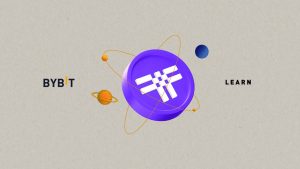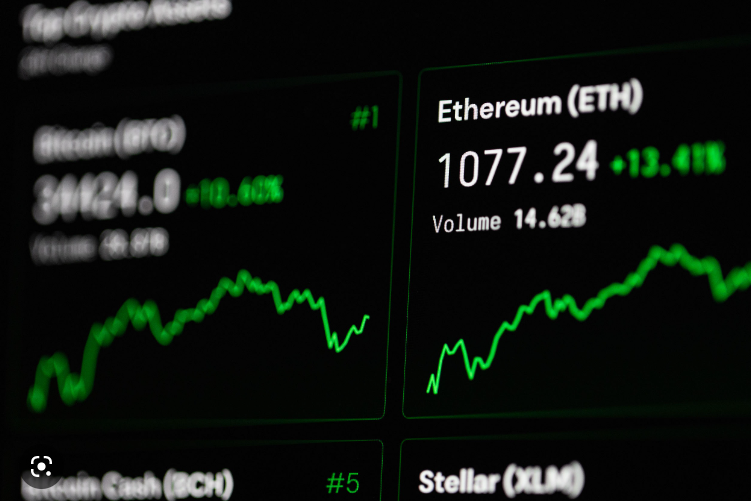Developers are really looking to build a DeFi ecosystem on top of Bitcoin.
We have every right to expect an explosive future of narratives in the Bitcoin Ecosystem.
For example:
Bitcoin Layer 2, Bitcoin LSD, Bitcoin NFTand Bitcoin DeFi summer.
As you all know, the difference between Bitcoin Blockchain compared Ethereum and later generation Blockchains is Smart Contract.
As Ethereum supports building smart contracts that help execute various complex logic; Bitcoin only supports simple back-and-forth transactions, building a dApp on Bitcoin is impossible.
The 2021 Taproot upgrade opens the door to the potential for building other pieces of the Bitcoin network. You may have heard of Ordinals, a new trend emerging since early 2021 that allows users to create and trade NFTs directly on the Bitcoin network.
Scalable project: Stacks, RSK.
Developers are really looking to build an ecosystem on Bitcoin.
WHAT IS DEFI?
DeFi (Decentralized Finance) is a decentralized finance – operated by smart contracts on the blockchain platform, participants only need to trust and use smart contracts instead of another third party like a Bank or credit institutions in traditional finance.
DEFI Inherits BLOCKCHAIN’S SPECIAL CHARACTERISTICS
- Decentralized – Decentralized
- Permissionless – Permissionless
- No need to put your trust – Trustless
- Transparent – Transparent
- Self-Custody – Self-Custody
DEFI VS BITCOIN
DeFi on Bitcoin refers to the development of a decentralized financial platform that runs directly or indirectly on the Bitcoin network.

Currently, there are two ways to deploy BTC-Fi:
BTC to wrap BTC, to use DeFi services available at other chains like Ethereum.
Build a new DeFi ecosystem on scaling solutions like a sidechain or layer 2.
Either way, the user needs to lock an amount of Bitcoin on the main chain through a contract lock.
After that, a new amount of Bitcoin on the chain will be minted for users to participate in the DeFi ecosystem on it.
POTENTIAL
Since its launch until now, BTC has been used primarily as a store of value further away than as a means of payment. The growth of scaling solutions led to the growth of the DeFi ecosystem on Bitcoin.
Bitcoin will have more utility than a store of value, holders can participate in activities like lending/borrowing, LP farming, buying NFT, etc. easily and SAVE.
A developed DeFi ecosystem will be the FOUNDATION to unlock billions of dollars of liquidity in Bitcoin lying motionless solely for the purpose of storing value.
CHALLENGE
However, there are still challenges for BTC-Fi:
– Security capabilities
– Ability to extension
– Connectivity and synchronization
DEFI ECOSYSTEM AT BITCOIN
SOME HIGHLIGHTS PROJECTS
INFRASTRUCTURE
Lightning Network
Lightning Network is a protocol that extends the Bitcoin network according to the Payment channel solution (a branch of the State channel).
EFFECT: helps reduce Bitcoin’s already sluggish network costs and congestion; payment after El Salvador accepts Bitcoin as legal currency.
WORKS: allows 2 parties to agree to open a 2-way payment channel and perform various transactions off-chain; update to the on-chain network; greatly increase the speed and reduce the load on the Bitcoin network.
STACKS (STX)
Stacks is an open-source blockchain closely linked to the Bitcoin network with the goal of unlocking Bitcoin’s full potential.
Stacks uses a programming language called Clarity.
PROS: allows programmers to predict what the program will do, how much data it will consume, and the cost of the application; used by the Algorand blockchain allowing developers to build unlimited dApps on Stacks according to their imagination.
Why say Stacks is closely linked to the Bitcoin network?
This is thanks to a special coin-operated mechanism called Proof of Transfer (PoX).
Objects participating in PoX: Miner and Stacker.
Miner: Transfer BTC to Stacker for a chance to receive rewards from minting new blocks and transaction fees. Miners are selected based on the amount of BTC they send through an algorithm called a “weighted random function”.
Stacker: Lock your STX tokens for one or more cycles.
Based on the number of tokens that Stacker has locked, they can be selected to receive BTC from Miner.
The process of creating new blocks on the Stacks blockchain is synchronized with the Bitcoin blockchain, that is, every time Bitcoin creates a block, Stacks also creates a block.
While each block on Bitcoin can only handle a small number of transactions. But with Stacks, it is possible to execute thousands of transactions and collect them all into one block.
All transactions that the Stacks blockchain performs are hashed and transmitted, stored in the Bitcoin block. From there, the transaction data inherits the immutability of the Bitcoin network, which can be rolled back at any time.
WHAT IS THE NATURE OF BITCOIN AND STACKS?
Stacks act as a sidechain of Bitcoin rather than Layer 2 as communication.
Currently, Stacks is a scaling solution for Bitcoin.
Goal: own the most developed ecosystem with about 100 dApps built on it.
Rootstock (RBTC)
Rootstock Smart Bitcoin (RBTC) or RSK is a developed blockchain.
OBJECTIVE: help Bitcoin increase scalability; allow developers to build dApps using the Solidity programming language; run parallel; Write transaction packet transactions to the Bitcoin network similar to Stacks.
KEY INGREDIENTS OF ROOTSTOCK
- Merged Mining: BlockBTCchain RSK uses the same Proof-of-Work (PoW) consensus algorithm as Bitcoin.
- Powpeg: Powpeg is a two-way bridge to convert Bitcoin to Rootstock and vice versa. The Powpeg protocol is implemented in RBTC tokens.
- RSK Virtual Machine (RVM): has the ability to interact with Smart Contracts on Ethereum. RVM is built on top of the Ethereum Virtual Machine, allowing the execution of
- Ethereum Smart Contracts on RSK.
- Developers can use the same source code, tools, and libraries when building RSK applications.
Mintlayer (ML)
Mintlayer (ML) is a scaling solution of the Bitcoin network. Mintlayer is Bitcoin’s Layer 2, but not connected to Bitcoin. Mintlayer builds its blockchain network on the Proof of Stake mechanism and uses Bitcoin’s hash function as a parameter for the random selection of validators.
This consensus structure is called Dynamic Slot Allotments (DSA).
The Mintlayer blockchain is tied to Bitcoin: every Mintlayer block has a reference to a Bitcoin block.
Ordinals
Ordinals is a protocol for the creation of NFTs on the Bitcoin network by Casey Rodarmor. Having only been around since the beginning of 2023, Ordinals has created a strong Bitcoin NFT wave with the number of NFT minted reaching over 500,000 in just a few months.
Ordinals allows “engraving” NFT information on each Bitcoin sats, thereby creating full on-chain NFTs that the founder of the Ordinals protocol calls the more advanced NFT name “Digital Artifact”.
The Ordinals wave has gained a lot of support from big names in the NFT field such as Yuga Labs, and DeGods.
DeFi
Threshold (T)
Threshold (T) was born with the purpose of becoming a cryptographic network for blockchain applications by making users’ information and assets private. It is the product of the merger between two decentralized protocols, NuCypher (NU) and Keeps Network (KEEP) in 2022.

Ren Protocol (REN)
Ren Protocol (REN), formerly known as Republic Protocol, was developed in 2017 initially focusing on the shadow OTC segment. Then rebranded to its current name and focused on cross-chain infrastructure.
Shamir’s Secret Sharing
The platform helps RenVM not make data public. These confidential data will be divided into parts held by the participants.
Secure multi-party computation (sMPC): an sMPC algorithm that allows developers to run scripts without revealing the input or output source.
Byzantine Fault Tolerance (BFT): The network thrives even when some nodes are unavailable or have malicious activity. The script continues to run and remains anonymous.
Hyperdrive: RenVM uses a modified version of the Tendermint consensus algorithm specifically designed for sharding and sMPC, which completes transactions at superfast speeds.
ADVANTAGE: Allows users to exchange tokens “discreetly” and also enables cross-chain interoperability.
Currently, REN supports Bitcoin, Bitcoin Cash, Zcash, Doge, Ethereum, BNB Chain, and Avalanche.
Badger DAO (BADGER)
The Badger DAO (BADGER) project is a community-administered DeFi protocol that aims to build the necessary infrastructure and create products to bring Bitcoin to the DeFi ecosystem.
The Badger DAO has two main components in the ecosystem, Sett (which acts as yield farming projects) and Digg (the pegged value on BTC).

